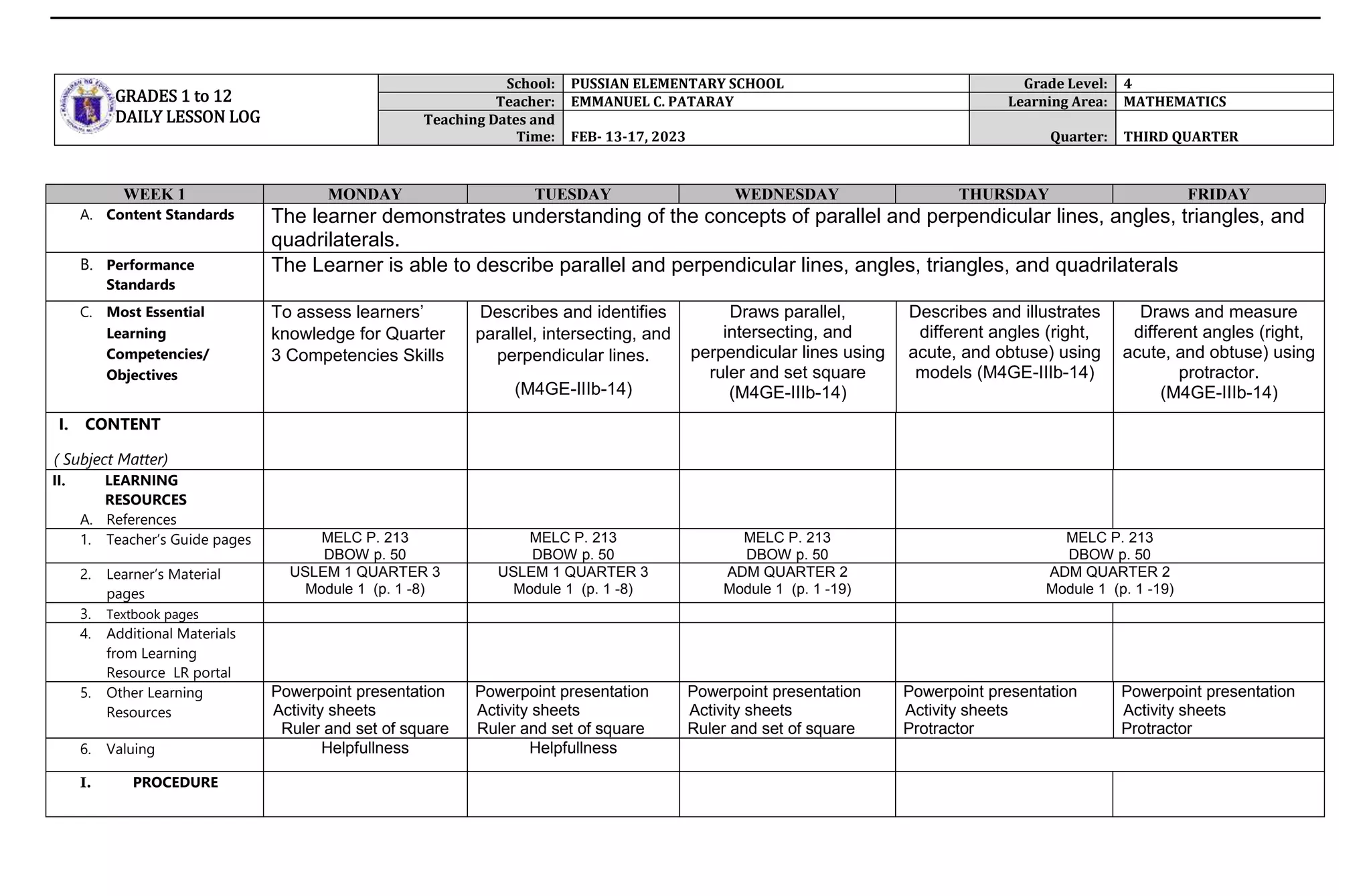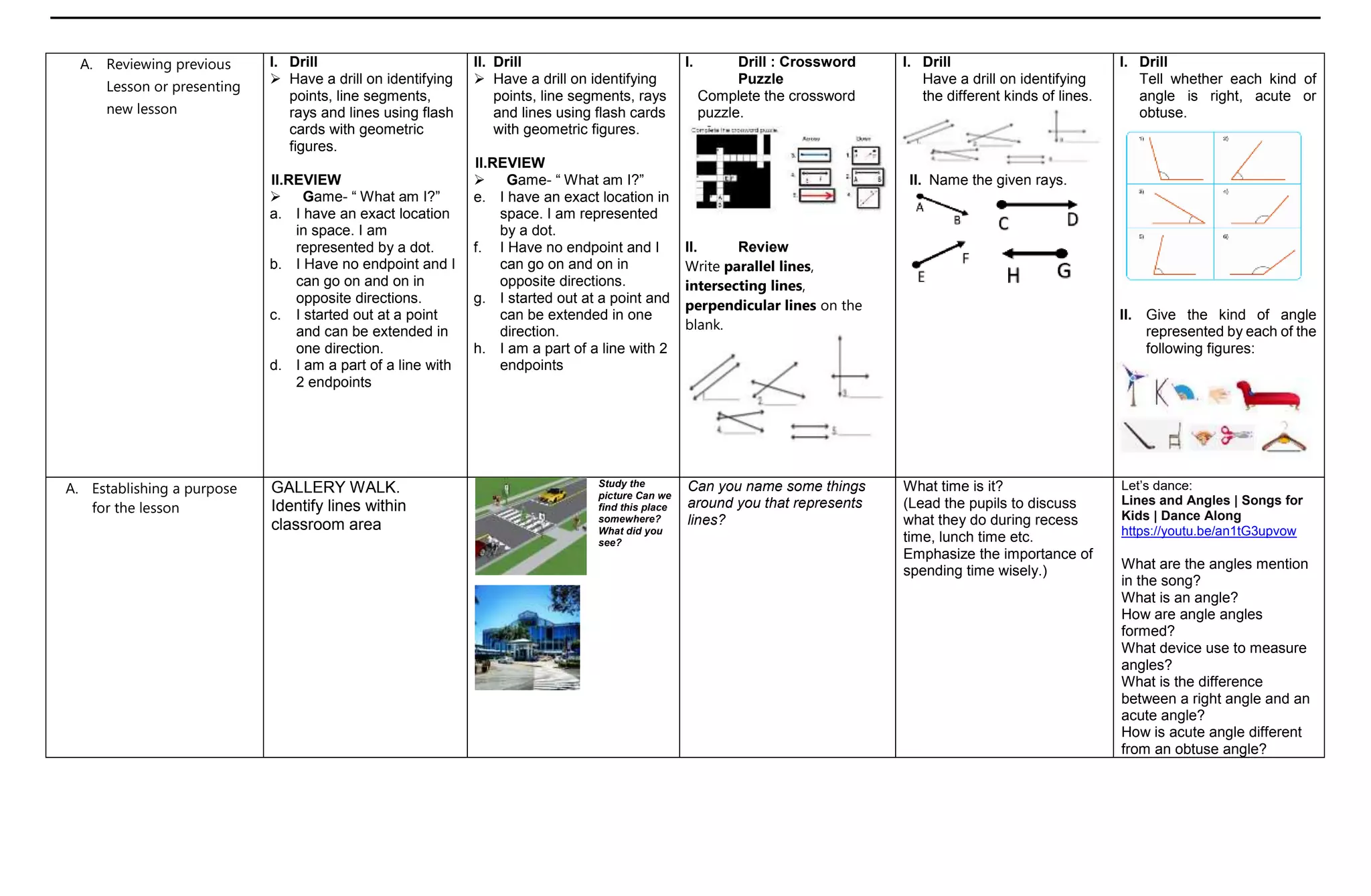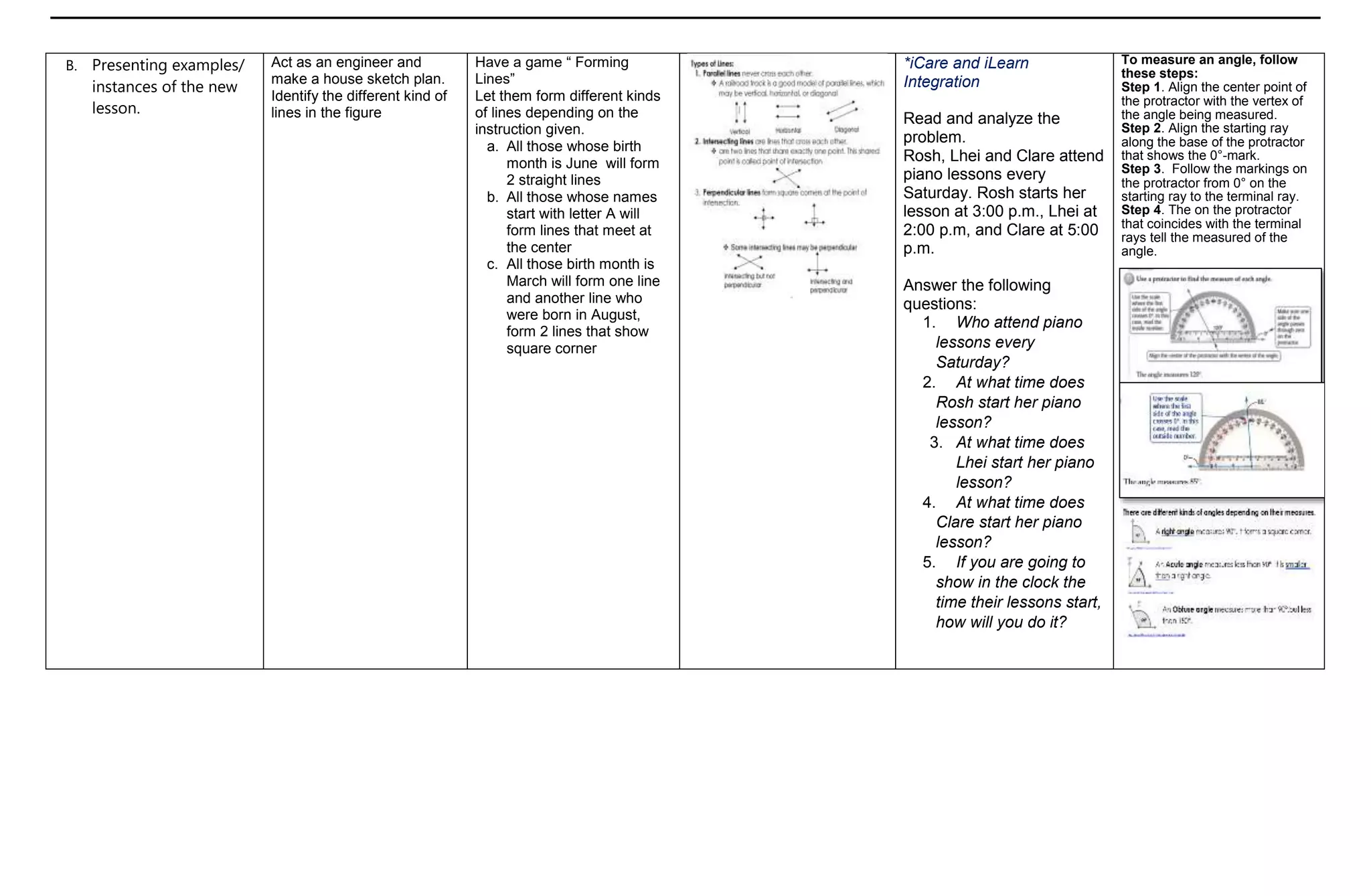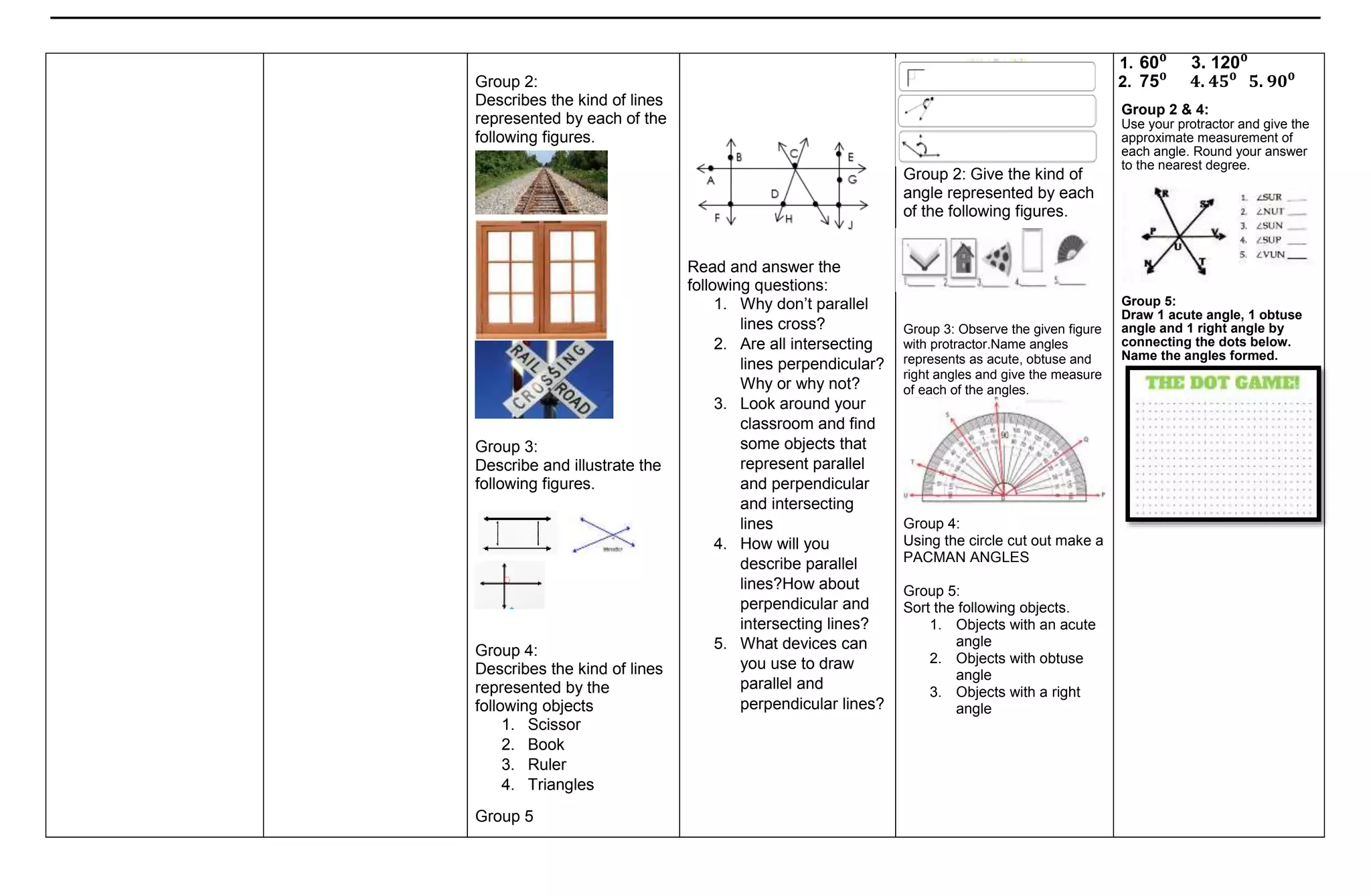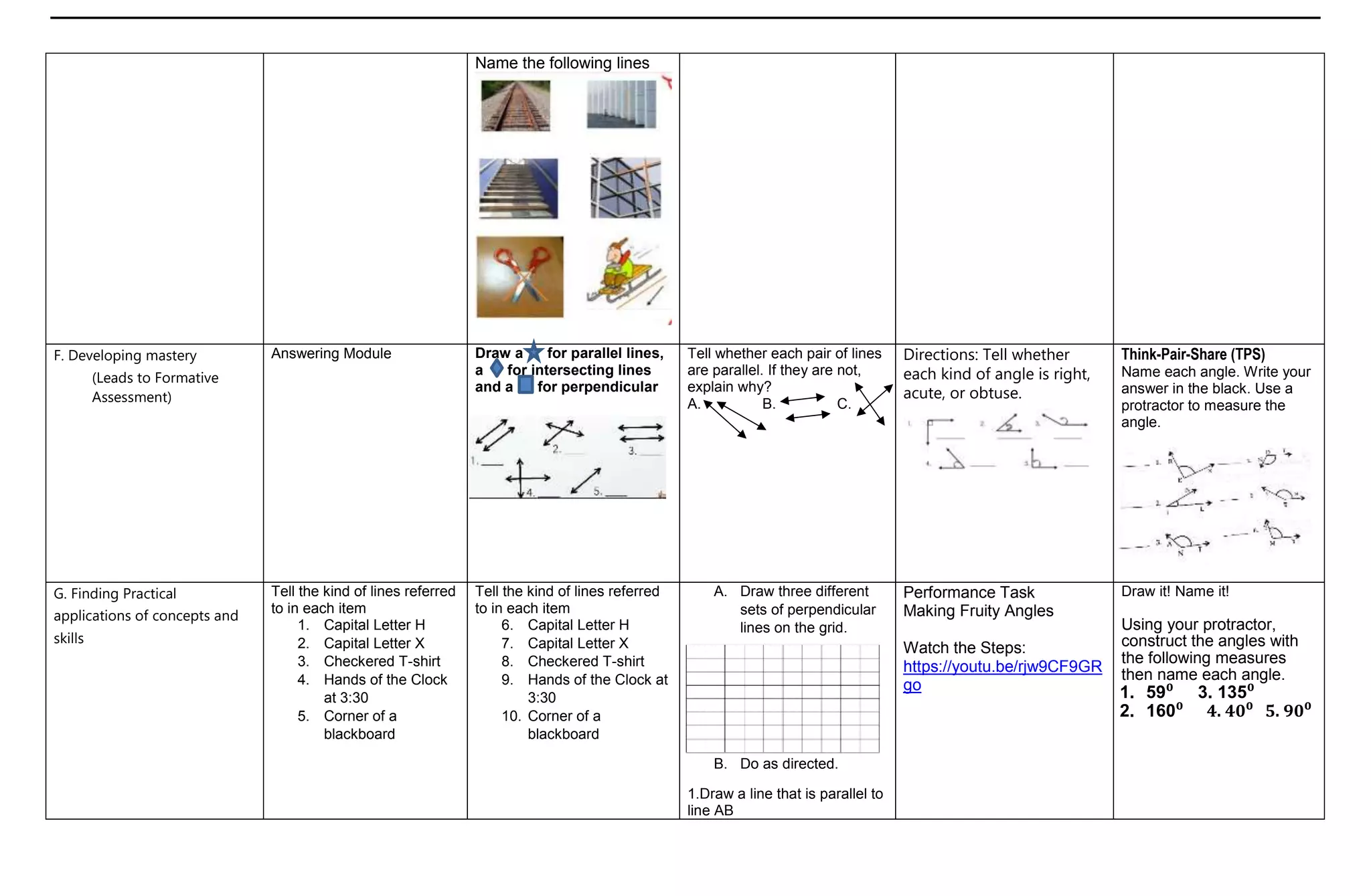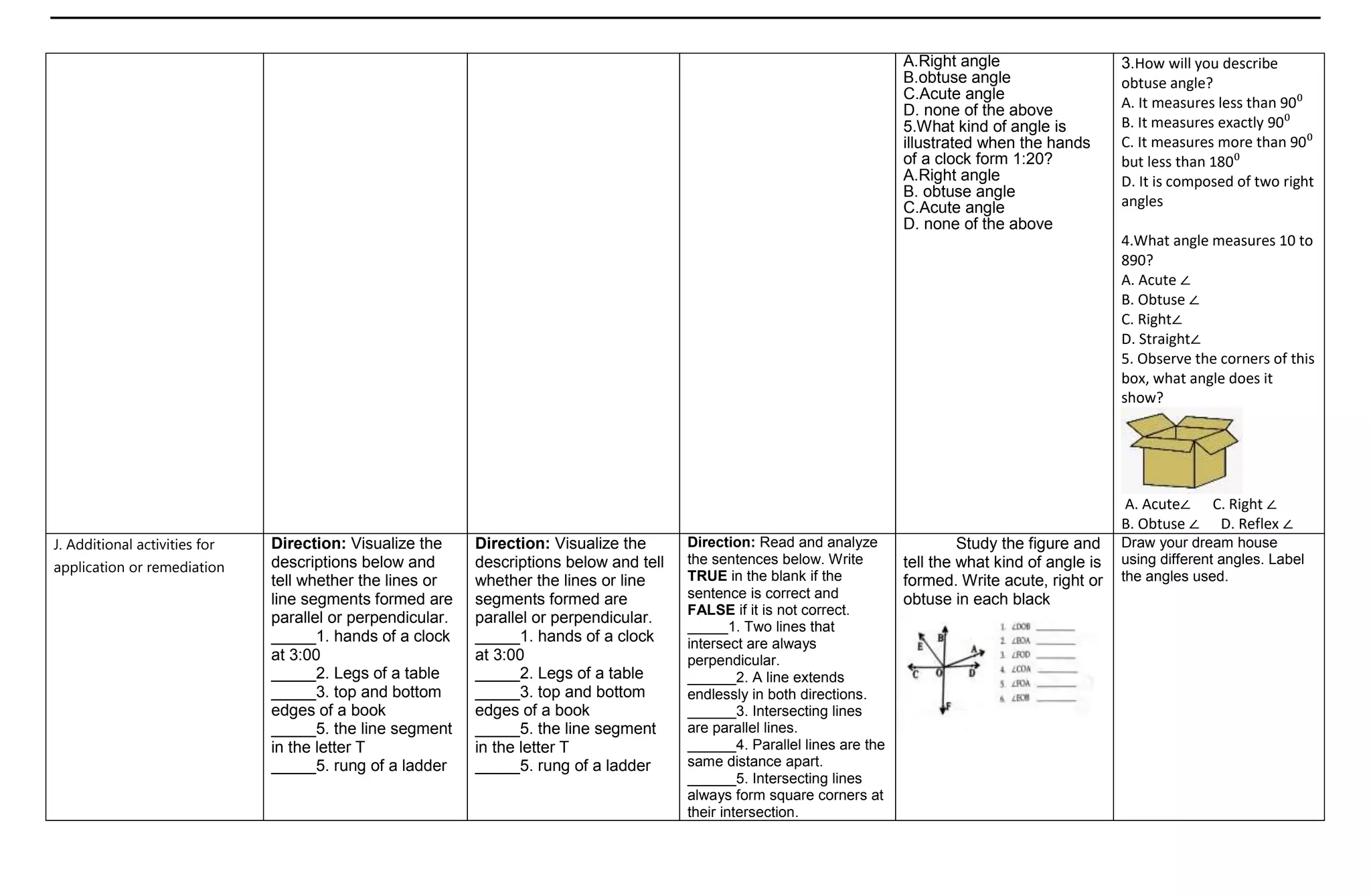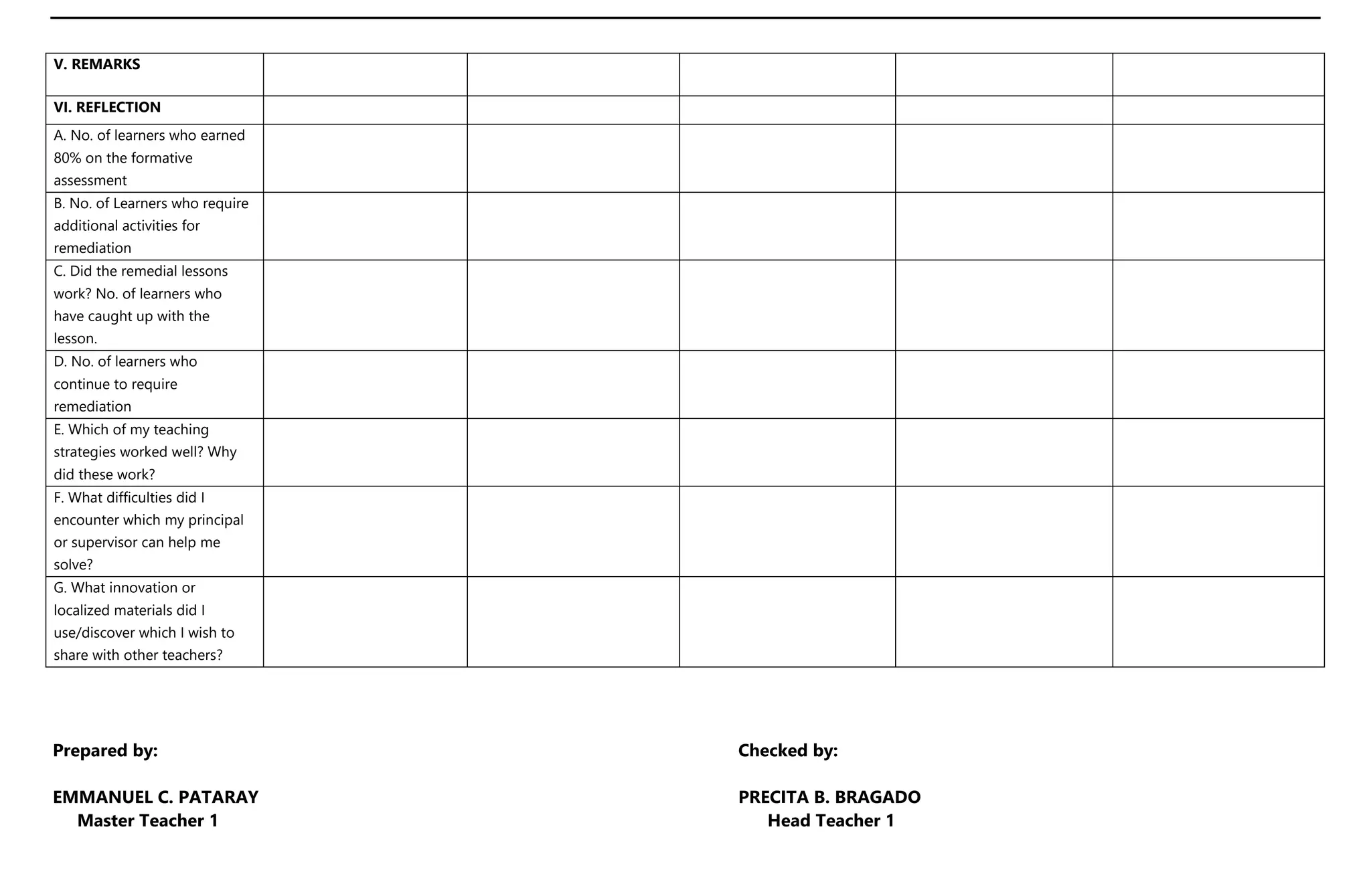This document contains a daily lesson log for a 4th grade mathematics class covering geometry concepts like parallel, perpendicular, and intersecting lines, as well as different types of angles. The lesson plan outlines content and performance standards, learning objectives, teaching procedures, activities, and an assessment. Key concepts covered include identifying and drawing different line types, classifying angles as acute, obtuse, or right, and using a protractor to measure angle measures. Group activities have students practicing skills like forming different line configurations and constructing specific angle measures. The reflection section allows the teacher to evaluate the lesson's effectiveness.
